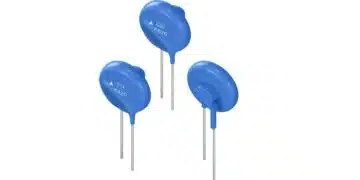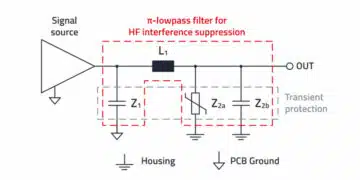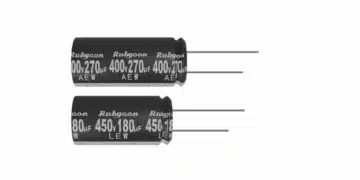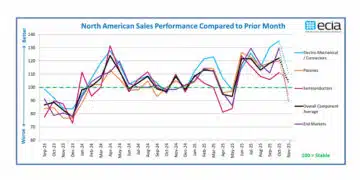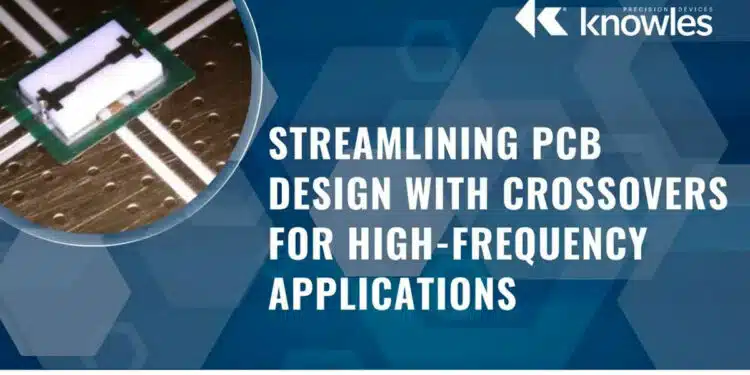Knowles Precision Devices recently developed a broadband crossover device, that operates from DC to 40 GHz to better serve applications that operate in the X, Ku, K and KA bands. This includes advanced RF, high-speed communications and radar technologies.
Considering the complexities of routing and signal integrity, it’s more and more common to see multilayer printed circuit board (PCB) designs where radio frequencies (RF) or digital traces cross on different layers of the stack.
However, depending on the number of crossovers needed, the cost and complexity of this solution can outweigh the potential design benefits. For example, at high frequencies, multilayer designs are uniquely expensive to build; when laying out a ‘tile’ phased array, there’s very little space for components because of the λ/2 pitch of the array.
Surface-mount crossovers are an alternative solution that allows a design to exist in one single layer. That said, most crossovers on the marketplace are below 6 GHz and less than ideal for high-frequency applications.
With a small form factor, Knowles high-performance crossovers save on layer count and cost by simplifying PCB signal routing and construction. In aggregate, these improvements mitigate voltage standing wave ratio (VSWR) issues from shifting around the board. The result is higher throughput in communication applications and finer resolution in radar applications.

FEATURES
- Wideband performance covering DC-40GHz
- Ease of implementation (compared to multilayer boards)
- Over 40dB isolation from DC-10GHZ and over 30dB isolation from 10-40GHz
- Over 20dB return loss from DC-10GHz and over 12dB return loss from 10-40GHz
- Small size L 0.15” x W 0.10” x H 0.02”
APPLICATIONS
- Aerospace
- Defense
- Telecom
- Radar


